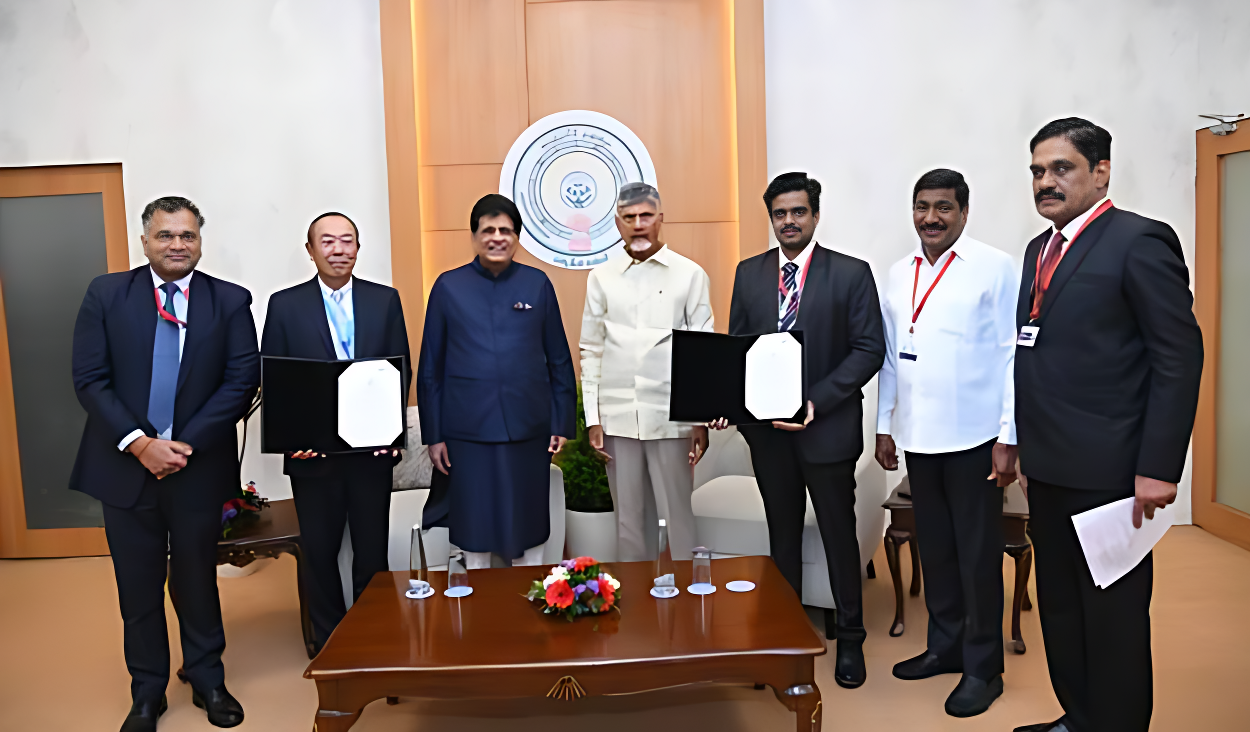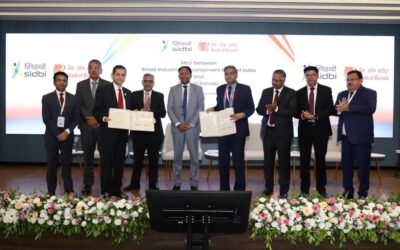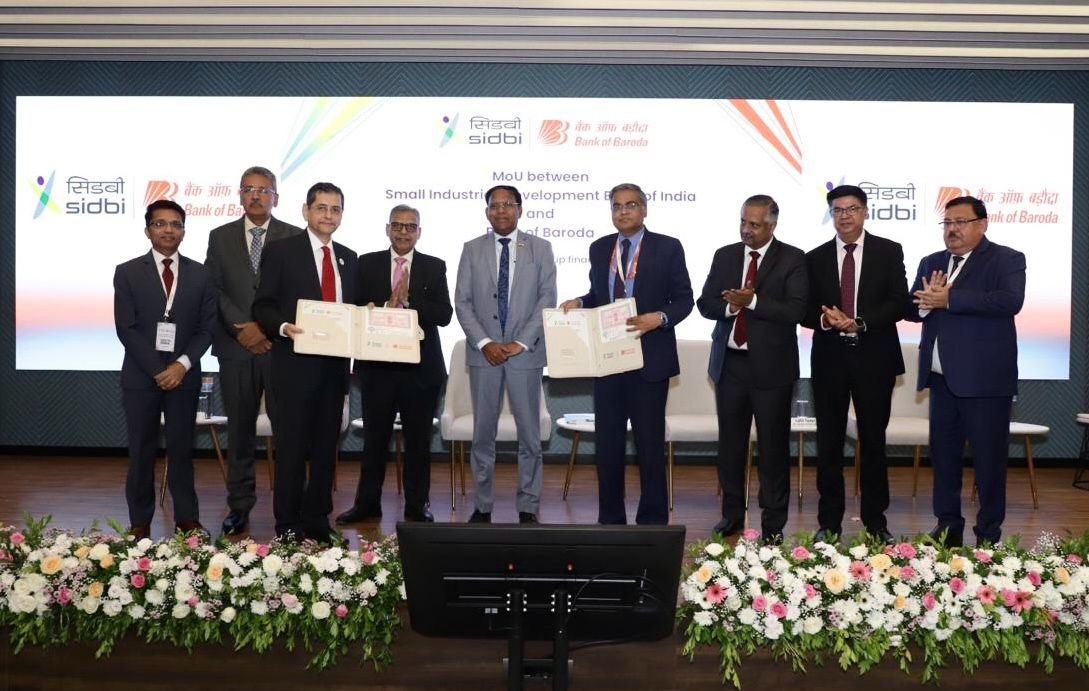Andhra Pradesh’s API Leap: The State Poised to Pioneer India’s First Fully Digital Logistics Oversight Model

Andhra Pradesh could become India’s first state to operationalise an entirely API-driven logistics oversight model, marking a structural shift in how the country might manage its trade arteries in the decade ahead. The signing of a landmark Memorandum of Understanding between the National Industrial Corridor Development Corporation Logistics Data Services Limited and the Government of Andhra Pradesh has elevated this digital ambition from conceptual possibility to institutional commitment. The agreement, formalised in the presence of the Union Minister of Commerce and Industry Piyush Goyal and Chief Minister N. Chandrababu Naidu at the 30th CII Partnership Summit in Visakhapatnam, signals a deliberate push toward building a logistics ecosystem powered by real-time data, system-wide visibility and unified infrastructure intelligence.
At the centre of this collaboration is the integration of the Unified Logistics Interface Platform. ULIP has become one of the country’s most consequential digital public goods for logistics, bringing together datasets from 44 systems across 11 ministries through 136 APIs and providing access to more than 2,000 structured data fields. Over 210 applications have already been built on top of ULIP, generating upwards of 200 crore API transactions. While these numbers reflect national momentum, Andhra Pradesh’s decision to anchor its logistics governance model on this digital backbone marks a significant turning point.
The agreement outlines the creation of an integrated digital platform that provides government and private stakeholders with continuous, real-time visibility into the state’s logistics operations, performance metrics and critical efficiencies. The objective is not limited to digitisation; it is to create a dynamically updating system that serves as a unified source of truth for ports, industry clusters, transporters, exporters and administrative departments. With support from INCAP, the state will work with NLDSL to build a comprehensive integrated logistics dashboard capable of monitoring key performance indicators across departments. Actionable reports and analytical insights emerging from this system will shape policy decisions, capacity planning and infrastructure upgrades.
This initiative is designed to achieve something Indian logistics has historically lacked: consistent, interoperable, and verifiable data flows across stakeholders. Fragmentation has long constrained India’s logistics competitiveness. Ports operate with their own systems, transporters function with separate visibility tools, and state agencies maintain independent databases, creating a landscape where information is abundant but rarely harmonised. By transitioning to an API-led architecture, Andhra Pradesh is attempting to collapse these silos and normalise a culture of data continuity.
The timing is strategically relevant. As global manufacturers recalibrate supply chains and seek predictable, digitally mature production ecosystems outside China, countries are competing on logistics precision as much as on labour cost, capacity or incentives. India’s logistics cost as a percentage of GDP remains above global benchmarks and is directly impacted by coordination gaps. A real-time system that integrates stakeholders onto one digital plane has the potential to reduce wait times, enhance predictability, improve compliance quality and create a unified rhythm across multimodal routes.
For a state with maritime assets as significant as Andhra Pradesh’s, this becomes even more consequential. Its coastline of nearly 974 kilometres, coupled with high-capacity ports including Visakhapatnam, Krishnapatnam, Kakinada and Gangavaram, positions the state as a potential eastern maritime gateway. Yet in the contemporary logistics playbook, physical assets alone no longer secure competitive advantage. Exporters evaluate real-time visibility, process transparency, digital documentation readiness and system responsiveness as core criteria in selecting trade corridors. An API-driven oversight system equips Andhra Pradesh with the capability to present itself not only as a logistics hub but as a digitally disciplined logistics state.
The implications for MSMEs are particularly substantial. Smaller exporters often struggle with fragmented touchpoints, unpredictable documentation timelines, limited shipment visibility and disproportionate transaction costs. A unified platform that standardises data flows and automates access to logistics information creates an equalising effect. MSMEs that lack in-house digital or compliance infrastructure will gain access to a state-backed visibility mechanism that supports decision-making, reduces delays and enhances credibility with global buyers. In a marketplace where reliability is often valued more than price, this can significantly strengthen export success rates.
For the private ecosystem of transporters, logistics service providers, warehousing operators and shipping lines, the benefits are equally compelling. A real-time integrated system enables them to forecast cargo volumes, optimise fleet utilisation, manage yard capacity, assess congestion trends and reduce empty backhauls. When all stakeholders operate with a consistent understanding of system conditions, collective efficiency improves. This harmonisation is not regulation by burden; it is governance by digital alignment.
The MoU also carries symbolic weight in the context of India’s National Logistics Policy. While national platforms have taken shape, the true test of the NLP lies in state-level execution. Andhra Pradesh’s collaboration demonstrates what alignment between digital public infrastructure and state-led implementation can achieve. It creates a pathway for what a federated logistics intelligence network across India could look like if replicated in other regions.
Yet the aspiration demands rigorous execution. Building a real-time logistics oversight system introduces operational responsibilities related to cybersecurity, data governance, privacy protocols and vendor-neutral integration standards. As systems become more interconnected, supply chain vulnerabilities also increase. Andhra Pradesh will need robust authentication frameworks, secure access controls and well-defined escalation mechanisms to handle potential disruptions. A modern logistics data infrastructure must operate with resilience at its core.
The governance framework must also accommodate long-term flexibility. A statewide logistics dashboard is not a static product; it must evolve with new trade flows, new industrial corridors, new security challenges and new datasets. Andhra Pradesh’s success will depend on its ability to build a modular, expandable architecture rather than a rigid one.
The presence of senior leadership at the MoU signing further reflects the strategic significance being attached to this initiative. NICDC and NLDSL leadership, represented by Rajat Kumar Saini, and INCAP’s leadership, represented by C. V. Praveen Adithya, alongside NLDSL CEO Takayuki Kano, have placed this collaboration within the broader mission of strengthening India’s position as a leader in resilient supply chain infrastructure. Their joint commitment reinforces the idea that logistics modernization is no longer a matter of incremental reform; it is a matter of national competitiveness.
In the broader economic narrative, Andhra Pradesh is positioning itself at the intersection of technology and trade. If the state succeeds in building and institutionalising India’s first fully API-driven logistics oversight model, it will not only enhance its own operational strengths but will set a precedent for how India can modernise its logistics networks in a federated, scalable manner. A unified logistics intelligence grid across states is no longer a theoretical aspiration. Andhra Pradesh’s decision brings it within striking distance of realization.
As global supply chains move toward intelligence-driven control towers, India has an opportunity to present a differentiated proposition: a logistics system anchored in transparency, predictability and digital harmony. Andhra Pradesh’s new digital chapter is more than a technological upgrade. It is a demonstration of how a state can reposition itself through institutional commitment, infrastructure foresight and strategic adoption of national digital platforms. If executed with discipline, this could become a defining case study in India’s journey from a fragmented logistics economy to a globally competitive, digitally governed trade engine.











